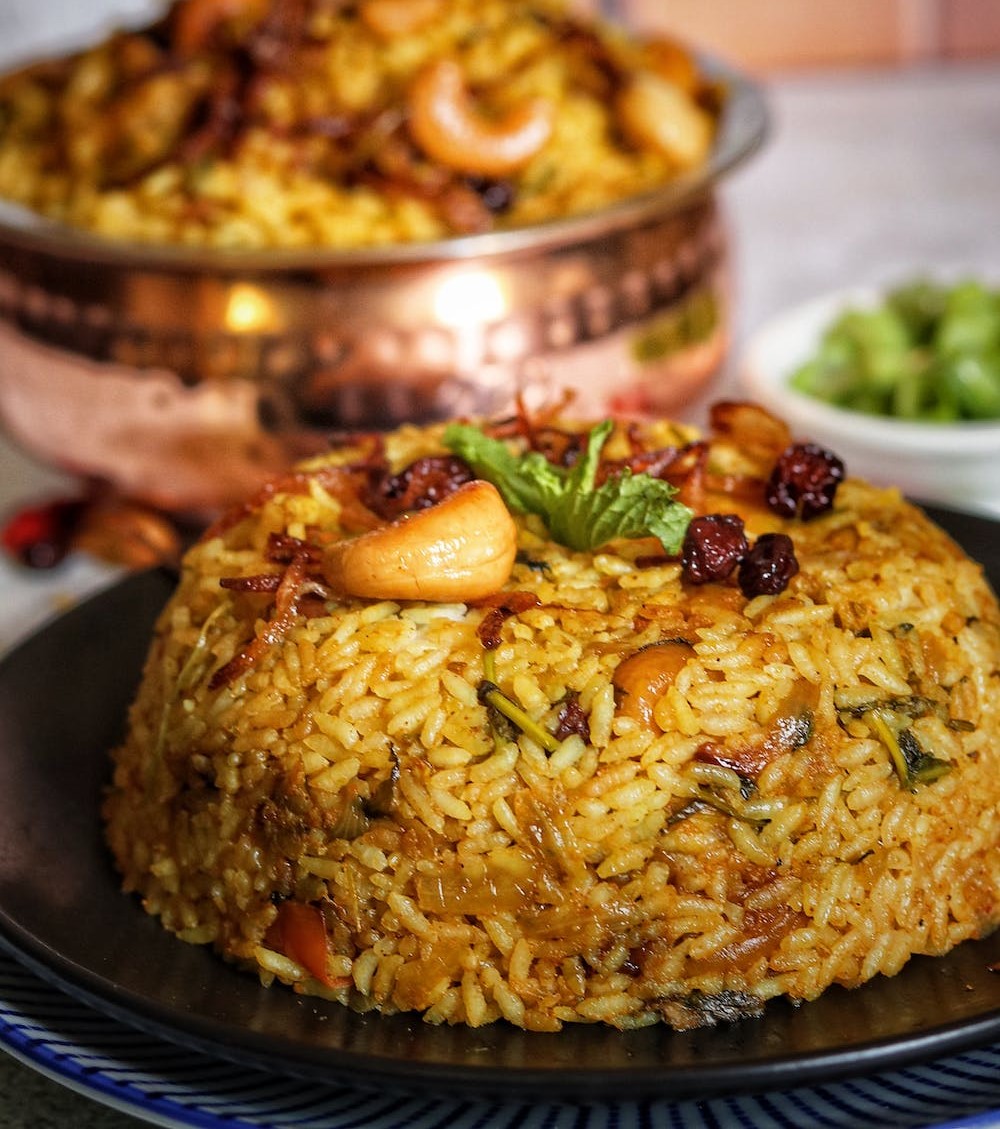Veg Biryani, short for Vegetable Biryani, is a mouthwatering and aromatic dish that hails from the Indian subcontinent. This culinary masterpiece has gained worldwide popularity for its exquisite blend of flavors, fragrant spices, and wholesome ingredients. In this article, we will delve into the rich history, ingredients, cooking techniques, and the delightful experience that Veg Biryani offers to food enthusiasts across the globe.The history of Veg Biryani is as fascinating as its taste. It finds its roots in the kitchens of the Mughal emperors in India, where it was conceived as a dish fit for royalty. The name “Biryani” is believed to have originated from the Persian word “Birian,” meaning ‘fried before cooking.’ Over time, it evolved and adapted to different regions, leading to various regional styles and variations.
Veg Biryani ingredients You’ll Need
- 2 cups of basmati rice
- Assorted vegetables (carrots, peas, beans, potatoes, etc.)
- Cooking oil or ghee
- Cumin seeds
- Onions
- Ginger-garlic paste
- Tomatoes
- Green chilies
- Biryani masala
- Yogurt
- Fresh coriander leaves
- Fresh mint leaves
- Saffron strands
- Warm milk
- Garam masala
- Salt
Preparing the Basmati Rice
- Wash and soak the basmati rice for 30 minutes.
- Boil water with some salt and cook the rice until it’s 70% done. Drain and set it aside.
Sauteing the Aromatics
- In a large, heavy-bottomed pan, heat some oil or ghee.
- Add cumin seeds and let them splutter.
- Saute finely chopped onions until they turn golden brown.
- Add ginger-garlic paste and green chilies, sauté for a few minutes.
- Stir in finely chopped tomatoes and cook until they become soft.
Adding the Vegetables
- Add the assorted vegetables and cook for a few minutes.
- Mix in biryani masala, yogurt, and salt. Cook until the vegetables are partially done.
Spices and Flavors
- Layer the partially cooked rice over the vegetable mixture.
- Sprinkle garam masala, saffron-infused milk, and fresh mint leaves.
- Repeat the layers until all the rice and vegetables are used up.
Layering the Biryani
- Cover the pan with a tight-fitting lid or aluminum foil to trap the steam.
- Cook on low heat for about 20-25 minutes.
Cooking on Dum
- Dum cooking is a slow cooking process that enhances the flavors. Place a heavy pan or tava under the biryani pot and cook for an additional 15-20 minutes on low heat.
Garnishing and Serving
- Once done, gently fluff up the veg biryani with a fork.
- Garnish with fried onions, fresh coriander leaves, and more mint leaves.
- Serve hot with raita or salan.
Tips and Tricks
- Use high-quality basmati rice for the best results.
- Customize the vegetables to your preference.
- Adjust the spice level according to your taste.
- Let the biryani rest for a few minutes before serving.
Variations of Veg Biryani
Veg biryani comes in various regional and creative adaptations. You can explore different styles such as Hyderabadi, Lucknowi, or even a fusion biryani with your favorite ingredients.
Veg Biryani for Special Occasions
Veg biryani is a favorite choice for celebrations and festivals. Its rich flavors and vibrant colors make it a standout dish for special occasions like weddings, birthdays, and family gatherings.
Health Benefits of Veg Biryani:
A Wholesome Blend of Ingredients
The Foundation: Rice
At the core of any Biryani dish lies rice, and Veg Biryani is no exception. Basmati rice, often used in this recipe, is a long-grain variety that is rich in carbohydrates. While some may view carbohydrates with caution, they are an essential part of a balanced diet. Carbohydrates provide our bodies with energy, making them indispensable for our day-to-day activities.
Nutrient-Packed Vegetables
Veg Biryani lives up to its name by featuring an array of vibrant and nutrient-packed vegetables. These include but are not limited to carrots, peas, bell peppers, and cauliflower. Each vegetable brings its unique set of vitamins and minerals to the table, contributing to the overall nutritional value of the dish.
For instance, carrots are renowned for their high beta-carotene content, which is a precursor to vitamin A and excellent for maintaining healthy vision. Peas are rich in dietary fiber, promoting good digestive health, while bell peppers are a great source of vitamin C, an antioxidant that supports the immune system.
Flavorful Spices and Herbs
What truly sets Veg Biryani apart is its delightful blend of spices and herbs. From fragrant cloves and cardamom to earthy cumin and coriander, these spices not only infuse the dish with incredible flavors but also offer health benefits. For example, turmeric, a staple in Indian cuisine, contains curcumin, a potent anti-inflammatory compound that may help reduce the risk of chronic diseases.
Protein-Packed Ingredients
To make Veg Biryani a well-rounded meal, it often includes protein-rich ingredients such as paneer (Indian cottage cheese) or tofu. These sources of plant-based protein are not only delicious but also excellent choices for vegetarians and vegans. Protein is essential for muscle repair, immune function, and overall growth and development.
Frequently Asked Questions (FAQs)
- Is veg biryani suitable for vegans?
- Yes, you can make veg biryani vegan-friendly by using plant-based yogurt and replacing ghee with oil.
- Can I use brown rice instead of basmati rice?
- While traditionally made with basmati rice, you can opt for brown rice for a healthier twist.
- What can I serve with veg biryani?
- Veg biryani pairs well with raita, cucumber salad, or brinjal curry.
- How do I prevent the rice from getting mushy?
- Be cautious while cooking the rice initially to ensure it’s only 70% cooked.
- Can I make veg biryani in a pressure cooker?
- Yes, you can prepare veg biryani in a pressure cooker for a quicker version.

